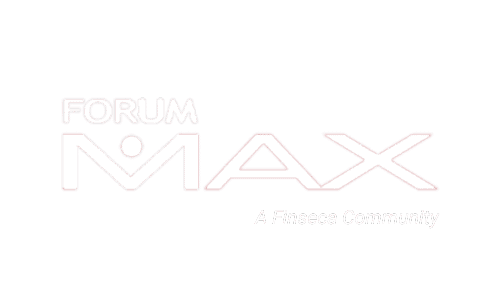
The WRMarketplace is created exclusively for AALU members by experts at Greenberg Traurig and the AALU staff, led by Jonathan M. Forster, Steven B. Lapidus, Martin Kalb, Richard A. Sirus, and Rebecca Manicone. WRMarketplace #17-27 was written by Greenberg Traurig Shareholder Ian A. Herbert.
The AALU WRNewswire and WRMarketplace are published by the Association for Advanced Life Underwriting® as part of the Essential Wisdom Series, the trusted source of actionable technical and marketplace knowledge for AALU members—the nation’s most advanced life insurance professionals.
Thursday, 06 July 2017 WRM#17-27
TOPIC: Better Yet – Safe Harbor 401(k) Plans: How Exactly Do They Work?
MARKET TREND: 401(k) plans remain the most popular employer-provided retirement vehicles, raising the question of how to maximize their ease of use while enhancing their retirement saving capabilities. The safe harbor 401(k) plan design provides a solution.
SYNOPSIS: Generally, every 401(k) plan must satisfy annual nondiscrimination requirements, which are met by passing numerical tests that compare the average percentage of compensation deferred by highly compensated employees to the average percentage deferred by non-highly compensated employees. Failure of these tests typically results in a refund of some or all of the amounts deferred by highly compensated employees and the forfeiture of associated matching contributions, thereby diminishing the retirement savings available to key employees. The employer’s creation of a “safe harbor plan,” however, can resolve these issues.
TAKE AWAYS: The design of a safe harbor plan relieves a 401(k) plan sponsor of the administrative burdens and costs of performing annual nondiscrimination tests while ensuring that highly compensated employees can contribute the amount they desire for a plan year. The trade-off for this benefit is the cost of “meaningful contributions” – i.e., matching contributions of up to 4% of compensation or non-elective contributions of at least 3% of compensation – that are fully vested. Employers should evaluate their overall benefit strategy and their expected participation rates to estimate the cost of a safe harbor structure, and then determine whether the benefits are worth the cost.
Safe harbor 401(k) plans are effective in preventing retirement saving forfeitures for certain key employees, as well as alleviating the administrative burdens and expenses of nondiscrimination testing for plan sponsors. The key is to understand and balance these benefits against the costs associated with a safe harbor plan.
WHAT IS A SAFE HARBOR PLAN?
A safe harbor plan is exempt from performing the required nondiscrimination test applicable to deferral contributions, known as the “ADP Test,” and, assuming proper structuring, the similar test for matching contributions, known as the “ACP Test.” To achieve these exemptions, a safe harbor plan must:
- Provide a minimum level of contributions for non-highly compensated employees;
- Meet vesting requirements;
- Distribute annual notices to participants;
- Impose specified withdrawal restrictions on certain contributions; and
- Meet various administrative requirements.
MINIMUM CONTRIBUTION REQUIREMENTS
The minimum contributions required on behalf of non-highly compensated employees depends on whether the plan provides for the making of a matching contribution or a non-elective contribution, regardless of whether the participant defers compensation under the plan.
Matching Contributions. The basic safe harbor matching contribution is equal to (1) a 100% match on the first 3% of compensation deferred, plus (2) a 50% match on the next 2% of compensation deferred. This formula yields a total match of 4% of compensation, if at least 5% of compensation is deferred under the plan.
An employer may use a different matching formula, so long as three conditions are satisfied:
- At each deferral rate, the participant must get a matching contribution at least as great as the one that would be made under the basic matching formula.
- The matching formula does not provide for a higher level of match for any highly compensated employee than is provided for any non-highly compensated employee who defers at the same rate as the highly compensated employee.
- The rate of match does not increase as the rate of deferral increases.
In addition to these requirements, if a plan limits fixed matching contributions to deferrals of 6% of compensation and limits discretionary matching contributions to 4% of compensation, the plan will satisfy the safe harbor and be exempt from the ACP Test and the ADP Test.
Example: A plan provides for a match of 100% on the first 4% of compensation deferred, because at all rates of deferral, the participant gets a match as great as that provided under the basic matching formula. The plan, however, cannot provide for a match of 100% on the first 2% of compensation deferred and 75% on the next 4% of compensation deferred because, at a deferral rate of 3% of compensation, the basic formula would provide for a match contribution equal to 3% of compensation, but the alternative formula would only provide for a match equal to 2.75% of compensation.
Alternatively, a plan can satisfy the requirements of a safe harbor plan with a slightly lower level of matching contribution:
Example: A plan provides a 100% match on the first 1% of compensation deferred, plus a 50% match on the next 5% of compensation deferred. This formula yields a total match of 3.5% of compensation, if at least 6% of compensation is deferred under the plan. To use this reduced formula, the plan must implement a “qualified automatic enrollment arrangement” (“QACA”).
Under a QACA, eligible employees are automatically enrolled in the plan at a rate specified in the plan, which may be as little as 3% of compensation or as much as 10% of compensation. The eligible employee may affirmatively elect not to defer, or to defer at a different rate than the automatic enrollment deferral rate. In addition, if the initial automatic enrollment deferral percentage is less than 6% of compensation, the plan must provide that, absent an affirmative election otherwise by the participant, the deferral percentage escalates by 1% each year until the participant is deferring at a rate of 6% of compensation.
Nonelective Contributions. A plan satisfies the ADP Test safe harbor if a non-elective contribution of at least 3% of compensation is made on behalf of all non-highly compensated employees eligible to participate in the plan. The plan still must perform the ACP Test if matching contributions that do not meet the ACP Test safe harbor are made.
Contributions for ALL Eligible Non-Highly Compensated Employees. To satisfy the safe harbor requirements, the safe harbor matching contribution or non-elective contribution must be made on behalf of all eligible non-highly compensatedemployees. The plan cannot impose a requirement that such a participant perform a certain number of hours of service or be employed on the last day of the plan year to receive an allocation. Allocation requirements can, however, be imposed on highly compensated employees.
VESTING REQUIREMENTS
Generally, matching contributions and non-elective contributions made to satisfy the safe harbor requirements must be 100% vested at all times. If, however, the plan is using a QACA safe harbor approach, the plan can impose a vesting requirementof up to two years of service.
APPLICABLE NOTICE REQUIREMENTS
Within a reasonable time before the beginning of each plan year, a plan administrator must provide notice to eligible employees of information related to the provisions of the plan. For this purpose, a “reasonable time” has been interpreted by the IRS to mean between 30 and 90 days before the first day of the plan year.
The annual safe harbor notice must describe:
- The safe harbor formula used for making matching or non-elective plan contributions;
- Any other contributions allowable under the plan, including the possibility of discretionary contributions, and the conditions under which they are made;
- The plan into which the safe harbor contributions will be made (if different from the plan to which the elective deferrals are made);
- The amount and the type(s) of compensation that may be deferred under the plan;
- The withdrawal and vesting provisions applicable to contributions made under the plan;
- The process by which the participant may make deferral elections; and
- Information that makes it easy to obtain further information about the plan.
Also, if the plan includes a QACA, the annual notice must provide explanations of (1) the rights not to make elective deferrals or to make them at a different rate, and (2) how the participant’s contributions will be invested if the participant does not provide investment direction.
WITHDRAWAL RESTRICTIONS
Matching or non-elective contributions made to satisfy the safe harbor requirements are generally subject to the same withdrawal restrictions as 401(k) elective deferrals. Specifically, they only can be withdrawn (1) after a severance of employment, (2) after attainment of age 59-1/2, (3) upon death, disability, or certain plan terminations, or (4) if the distribution is a “qualified reservist distribution.” Unlike elective deferrals, however, safe harbor matching and non-elective contributions cannot be withdrawn in the event of a financial hardship.
ADMINISTRATIVE REQUIREMENTS
Full, 12-Month Plan Year. If an employer wants its 401(k) plan to qualify for a safe harbor, the plan generally must be amended to add the safe harbor features before the beginning of a plan year, and the plan year must last a full 12 months. The only exception is for a new 401(k) plan (or a profit sharing plan adding a 401(k) cash or deferred arrangement) that is not a successor of another 401(k) plan. In that case, the plan or 401(k) feature can be established as long as there are at least three months remaining in the plan year.
Limitation on Reducing or Suspending Safe Harbor Contributions. Safe harbor contributions can be suspended or reduced in the middle of a plan year only if the employer is operating at an economic loss or if the initial safe harbor notice indicated that safe harbor contributions could be reduced or suspended and that the reduction or suspension will not apply until at least 30 days after all eligible employees are provided notice of the reduction or suspension. The plan must be amended before the reduction or suspension can take effect and the amendment also must provide that the plan will satisfy the ADP and/or ACP Tests for the entire year of the reduction or suspension. The safe harbor contributions must be made for the period through the date on which the amendment becomes effective. Participants must be given a reasonable opportunity to change their deferral elections before the reduction or suspension takes effect.
Limitation on Mid-Year Plan Amendments. If a plan is amended in a manner that changes the information required to be included in the plan’s safe harbor notice (such as a change in the types of compensation from which deferrals can be made), the amendment cannot become effective until a reasonable time after all eligible employees are provided with notice of the content of the amendment. In addition, certain amendments are simply prohibited from being made in the middle of a plan year, including:
- An amendment to increase the number of years of service required to be vested in safe harbor contributions made under a QACA safeharbor;
- An amendment to reduce the number or otherwise narrow the group of employees eligible to receive safe harbor contributions;
- An amendment to the type of safe harbor plan, for example, from a traditional safe harbor to a QACA safe harbor; and
- An amendment to (1) modify or add a formula used to determine matching contributions (including a change to the definition of compensation) if the amendment increases the amount of matching contributions or (2) permit discretionary matching contributions. This type of amendment can be made, however, if the change is adopted at least three months before the end of the plan year and is made retroactively effective for the entire plan year.
Timing of Safe Harbor Contributions. Generally, safe harbor contributions must be made no later than 12 months after the end of the plan year to which they relate, though the contributions must be made earlier than that to be deductible for the prior plan year. Also, if safe harbor matching contributions are being based on a participant’s compensation for a payroll period, rather than his or her compensation for the plan year, the matching contribution must be made by the end of the plan quarter following the quarter in which the related elective deferral was made.
TAKE AWAYS
The design of a safe harbor plan relieves a 401(k) plan sponsor of the administrative burdens and costs of performing annual nondiscrimination tests while ensuring that highly compensated employees can contribute the amount they desire for a plan year. The trade-off for this benefit is the cost of “meaningful contributions” – i.e., matching contributions of up to 4% of compensation or non-elective contributions of at least 3% of compensation – that are fully vested. Employers should evaluate their overall benefit strategy and their expected participation rates to estimate the cost of a safe harbor structure, and then to determine whether the benefit is worth the cost.
DISCLAIMER
This information is intended solely for information and education and is not intended for use as legal or tax advice. Reference herein to any specific tax or other planning strategy, process, product or service does not constitute promotion, endorsement or recommendation by AALU. Persons should consult with their own legal or tax advisors for specific legal or tax advice.






